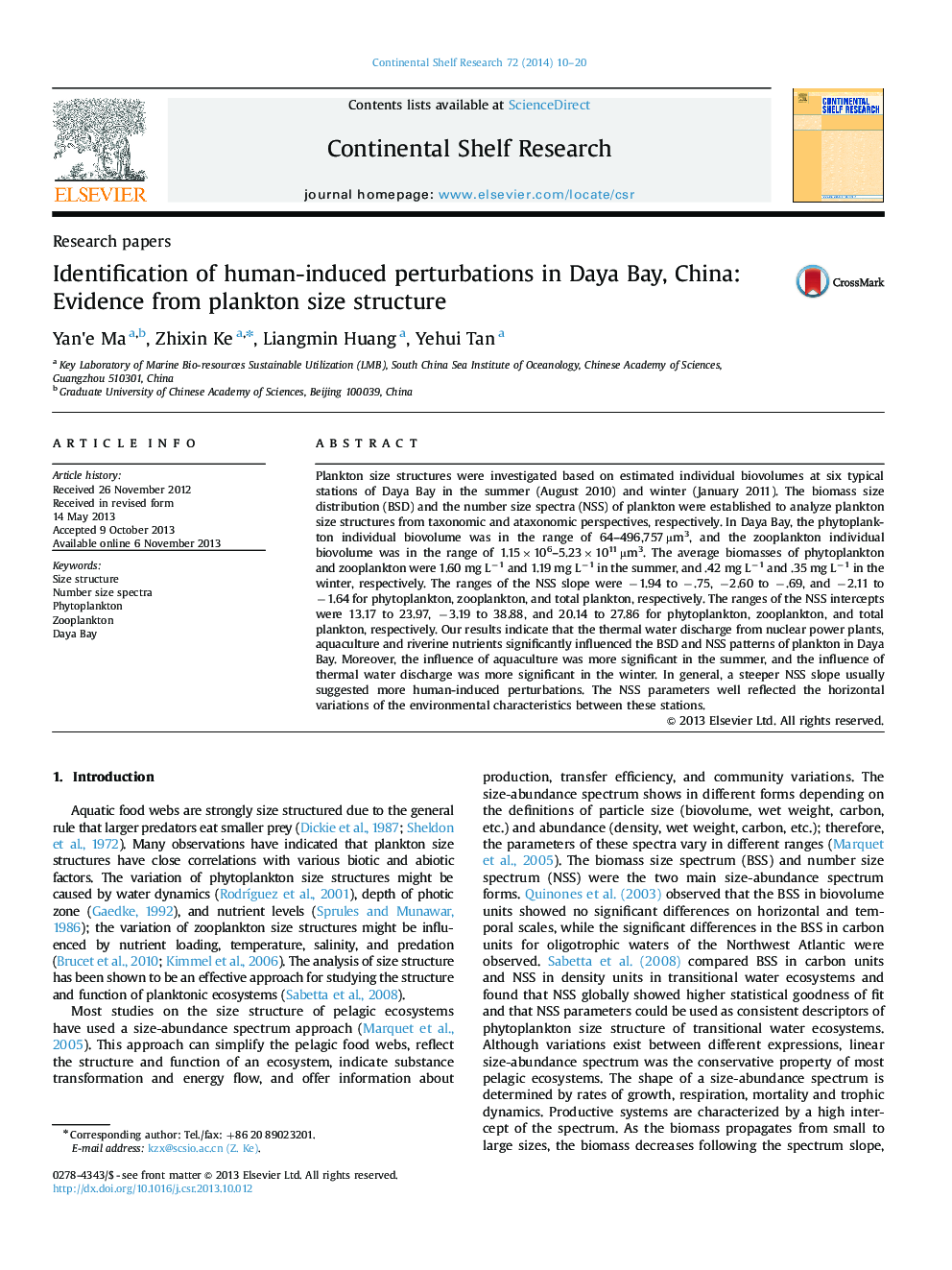| Article ID | Journal | Published Year | Pages | File Type |
|---|---|---|---|---|
| 6383235 | Continental Shelf Research | 2014 | 11 Pages |
Abstract
Plankton size structures were investigated based on estimated individual biovolumes at six typical stations of Daya Bay in the summer (August 2010) and winter (January 2011). The biomass size distribution (BSD) and the number size spectra (NSS) of plankton were established to analyze plankton size structures from taxonomic and ataxonomic perspectives, respectively. In Daya Bay, the phytoplankton individual biovolume was in the range of 64-496,757 µm3, and the zooplankton individual biovolume was in the range of 1.15Ã106-5.23Ã1011 µm3. The average biomasses of phytoplankton and zooplankton were 1.60 mg Lâ1 and 1.19 mg Lâ1 in the summer, and .42 mg Lâ1 and .35 mg Lâ1 in the winter, respectively. The ranges of the NSS slope were â1.94 to â.75, â2.60 to â.69, and â2.11 to â1.64 for phytoplankton, zooplankton, and total plankton, respectively. The ranges of the NSS intercepts were 13.17 to 23.97, â3.19 to 38.88, and 20.14 to 27.86 for phytoplankton, zooplankton, and total plankton, respectively. Our results indicate that the thermal water discharge from nuclear power plants, aquaculture and riverine nutrients significantly influenced the BSD and NSS patterns of plankton in Daya Bay. Moreover, the influence of aquaculture was more significant in the summer, and the influence of thermal water discharge was more significant in the winter. In general, a steeper NSS slope usually suggested more human-induced perturbations. The NSS parameters well reflected the horizontal variations of the environmental characteristics between these stations.
Related Topics
Physical Sciences and Engineering
Earth and Planetary Sciences
Geology
Authors
Yan'e Ma, Zhixin Ke, Liangmin Huang, Yehui Tan,
